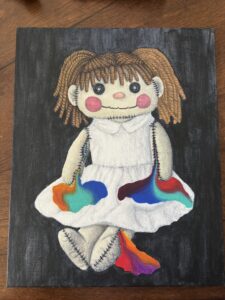AP Definitions to Self-harm Connections
Hey everyone! Welcome back!
Although challenging, I decided to push through and stick with neuroscience for one more week. This time, I read an article about the neuroscience of self-harm so I could get an overview of both sides of my project! This article still had a lot of terms I was unfamiliar with but luckily most terms were defined in the passages, making it much easier to read than the last article.
I ended up really enjoying reading about the neuroscience part of my topics. It was so interesting to see the simple definitions I learned in AP Psychology come to life and connect to self-harm.
In AP Psychology, I remember learning that the amygdala is related to fear and fight-or-flight responses while the hippocampus is associated with memories. The article mentioned that individuals with self-injury experience often have hyper-reactivity of their amygdala relative to those who don’t self-injure, leading to increased feelings of distress. These individuals may have difficulty with emotional regulation (difficulty coming down from the heightened state of emotion) and therefore may use self-harm as a way to help come down from that heightened emotional state.
My mentor also mentioned that the hippocampus is right next to the amygdala so when the hippocampus activates, the amygdala often activates along with it. This is why some people with trauma may have a heightened emotional reaction to words or sounds that trigger their memories, which may lead to self-harm as a coping mechanism to lower that emotional state.
I also finished my doll painting for now! It may not look too different from my version from last week, but I promise there were adjustments made. I first finished up the shadows for the hair. I did go a little overboard with them in the beginning, so I ended up painting over some of the darker areas with a light brown wash. I also added more shadows to the arms at the seams to put more emphasis on the bursting. The dress and colors flowing out of the doll also received more shadows so they don’t look as flat. Finally, I added faint washes of the colors flowing out of the doll to the background. I’m pretty happy with how it looks, as I believe it connects the whole painting together.
Next week I plan on stepping away from this doll painting and moving on to the shadowy figure painting. I still may do some final adjustments after I finish both paintings, but for now, I have one out of the two paintings done!


*Note: my mentor is currently out of the country, so she was not able to double check the accuracy of phrasing and information of this post.

Comments:
All viewpoints are welcome but profane, threatening, disrespectful, or harassing comments will not be tolerated and are subject to moderation up to, and including, full deletion.